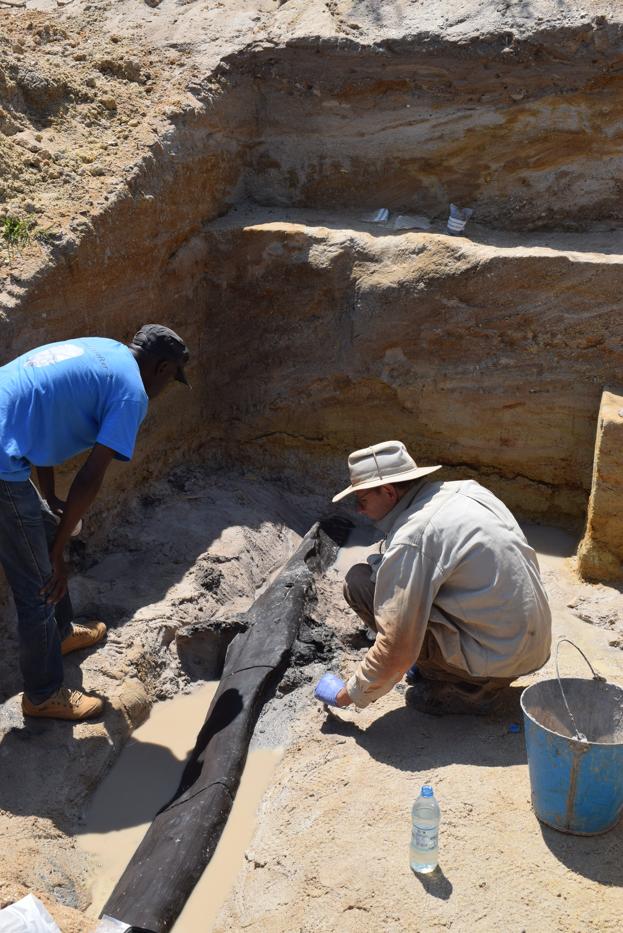Humans were making wooden structures as early as half a million years ago, new archaeological research has revealed. The structure in question was excavated in central Africa—upstream of Kalambo Falls, near Zambia’s border with Tanzania, by a team of archaeologists and scientists in 2019.
In a report published in the scientific journal Nature this week, the team from universities and organisations in the UK, Belgium and Zambia presented evidence that the work had been constructed 476,000 years ago. The discovery has highlighted the activities of hominins (early relatives of homo sapiens) such as chopping down trees to make digging tools and larger structures.

Kalambo Falls, near Zambia’s border with Tanzania
Courtesy University of Liverpool
A separate article in the scientific journal Nature chronicles the discovery: “on the first day of a 2019 excavation, the researchers slid down a slope to the shores of the Kalambo River and noticed a piece of wood jutting out of a cliff face. Excavations of the waterlogged site turned up several pieces of wood that seemed to have been modified, as well as one big surprise: a 1.4-metre-long log that had tapered ends and a deeply carved notch where it rested on another large piece of wood.” The notches on the large objects meant they could be stacked perpendicular to one another, thus indicating deliberate design.
In a statement, Professor Larry Barham, from the University of Liverpool’s Department of Archaeology, Classics and Egyptology, says to “forget the label Stone Age”. “This find has changed how I think about our early ancestors… they used their intelligence, imagination, and skills to create something they’d never seen before, something that had never previously existed”.

The complexity of the sculpture may upend precious beliefs about our early ancestors
Courtesy University of Liverpool
Geoff Duller, a professor of geography and Earth sciences at the University of Aberystwyth (UK) involved in the excavation, told CNN that the structure may have been part of a wooden platform used as a walkway, to keep food or firewood dry or perhaps as a base on which to build a dwelling. The structure is clearly man made, he adds, saying: “[…] this is not a natural process — it has been done intentionally using stone tools.”
The wooden pieces were airfreighted from Zambia to the University of Liverpool for analysis (2019–2022) and tested using a technique called luminescence; the wood samples are being conserved at York Archaeological Trust, UK, before being returned to Zambia for analysis at the Livingstone Museum.

























